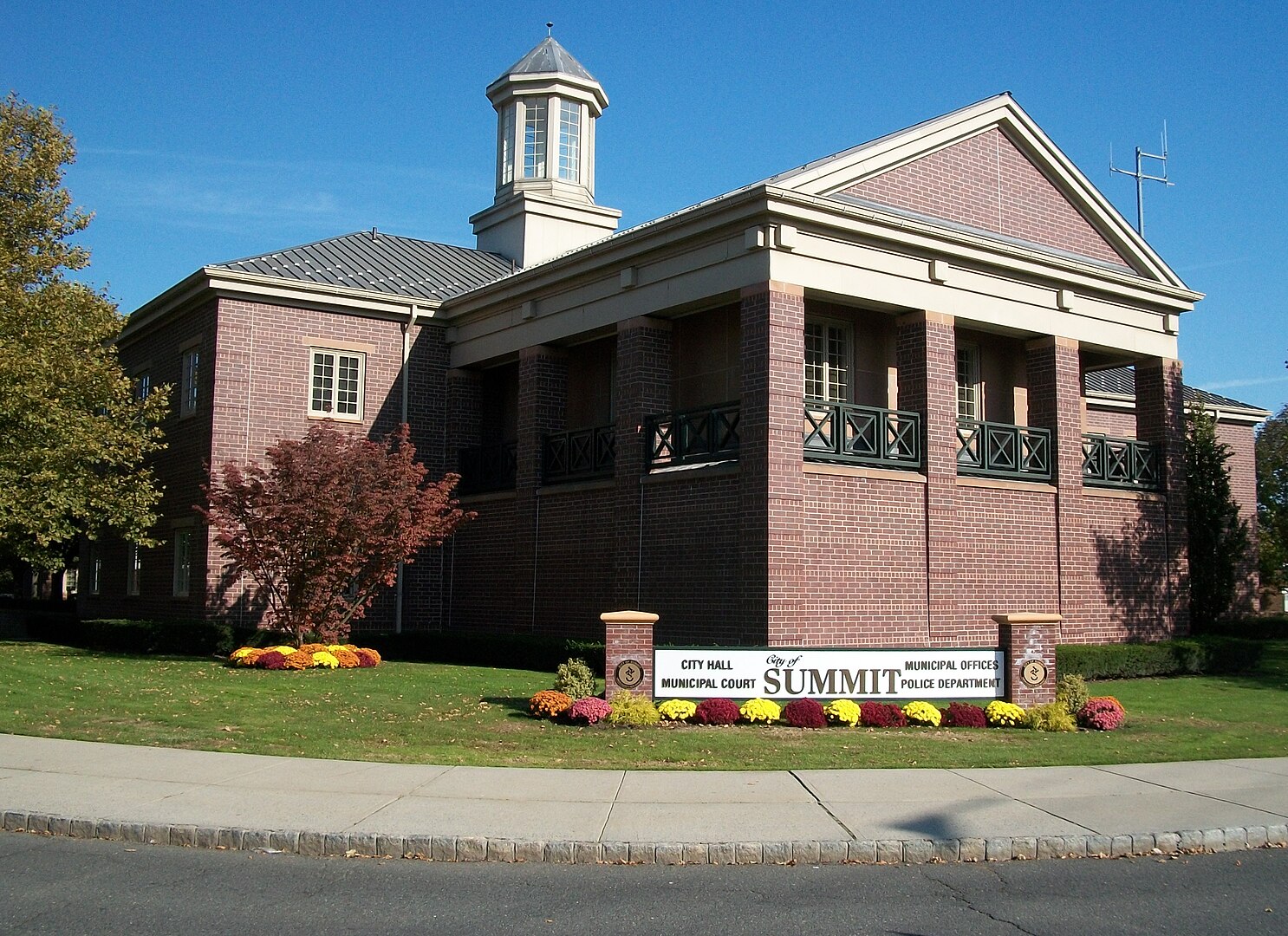Located in the core of New Jersey, a short distance from the vibrant city life of New York City, you’ll find the quaint suburb of Summit. This delightful city offers a harmonious mix of a cozy, small-town feel and modern, city-like elegance. It stands as a prime spot for those desiring the peacefulness of suburban life while maintaining proximity to city conveniences. In this blog post, we delve into the distinctive charm of Summit, New Jersey, uncovering its status as an undiscovered treasure among the suburbs of New York City.
The Historical Roots of Summit
Summit’s story is a tapestry woven with threads of American history and transformation. Established as a township in 1869, Summit has evolved from a 19th-century resort town for New York City’s elite to a modern suburb with a rich historical backdrop.
Originally, the Lenni Lenape Native Americans inhabited the region. With the arrival of European settlers in the 18th century, the area began its journey towards urbanization. Summit gained popularity in the late 1800s as a summer retreat for New York’s affluent families, drawn by its cooler climate and pristine natural surroundings. Grand Victorian mansions, many of which still stand today, were built during this era, embodying the town’s early luxury.
The turn of the 20th century saw Summit transition from a seasonal getaway to a year-round community. The construction of the railroad played a pivotal role in this transformation, making it easier for residents to commute to New York City. This accessibility attracted a wave of new residents, leading to a surge in the development of schools, churches, and commercial buildings.
One notable historical landmark is the Carter House, the oldest structure in Summit, dating back to the mid-18th century. It serves as a symbol of the town’s rich heritage and now houses the Summit Historical Society, showcasing artifacts and exhibits that chronicle the town’s journey through time. Explore more of New York’s suburbs’ history. Visit How Has History Shaped the Growth and Evolution of New York City’s Suburbs?
Architectural Marvels
Summit’s rich architectural tapestry tells a story of its evolution over the centuries, offering a visual journey through different eras and styles.
1. Victorian and Colonial Influences
- Victorian Architecture: This style flourished in Summit during the late 19th and early 20th centuries, a period of rapid growth for the city. Victorian homes in Summit are characterized by their intricate designs, ornate trim, and asymmetrical shapes. These houses often feature steep gabled roofs, towers or turrets, and expansive front porches. They represent Summit’s prosperity in this era, as the town transformed into an affluent suburb.
- Colonial Architecture: Colonial-style buildings in Summit reflect the city’s earlier history, dating back to the 18th and early 19th centuries. These structures are typically more straightforward and symmetrical, featuring elements like gabled roofs, shuttered windows, and a central front door. This style connects Summit to its historical roots, especially its significance during the American Revolutionary War.
2. Modern Designs: As time progressed, architectural trends in Summit also evolved. Post-World War II, the city saw an influx of more modern and contemporary architectural styles. These newer buildings are characterized by their simple lines, functional design, and integration with the surrounding landscape. They represent Summit’s adaptation to modern urban needs and aesthetics, balancing its historical charm with contemporary functionality.
3. The Summit Playhouse: Established in 1918, the Summit Playhouse is a prime example of early 20th-century architecture. It has served as a cultural landmark for over a century, hosting a variety of theatrical productions and community events. The playhouse embodies the artistic and cultural aspirations of Summit during a period of significant growth and transformation.
4. The Summit Opera House: The Summit Opera House, another architectural gem, adds to the city’s rich cultural tapestry. It stands as a symbol of Summit’s commitment to arts and culture. The design of the Opera House, often reminiscent of the grandeur of classical architecture, reflects the city’s appreciation for artistic excellence and its role as a cultural hub.
Together, these architectural marvels make Summit, not just a city of historical importance but also a living museum of evolving architectural styles. They capture the essence of different periods in the city’s development, from its colonial beginnings through its Victorian prosperity and into its modern era, making a walk through Summit a journey through time itself.
The Green Heart of Summit
Summit’s dedication to preserving and enhancing its green spaces is a crucial aspect of the city’s charm and livability. The city boasts several parks and natural areas that provide residents and visitors with a serene escape from urban life, highlighting Summit’s commitment to environmental stewardship and community well-being.
Watchung Reservation
The Watchung Reservation, another natural jewel, is a larger preserve that extends beyond the boundaries of Summit but is easily accessible to its residents. This area is part of the larger Watchung Mountain range and is the largest nature reserve in Union County, covering over 2,000 acres. It is a haven for outdoor enthusiasts, offering miles of hiking trails, scenic vistas, and diverse ecosystems. The reservation’s landscapes vary from dense forests to open meadows, streams, and lakes, providing habitats for a wide array of wildlife. It’s a place where people can engage in activities like hiking, bird watching, fishing, and horseback riding, allowing for immersive natural experiences.
Environmental Education and Conservation Efforts
Both the Reeves-Reed Arboretum and the Watchung Reservation are not only recreational spaces but also centers for environmental education and conservation. These areas play a critical role in educating the public about the importance of preserving natural habitats, biodiversity, and sustainable practices. They offer programs and workshops for all ages, fostering a connection between the community and the natural world.
Reeves-Reed Arboretum
The Reeves-Reed Arboretum is a significant green space in Summit, spanning over 13.5 acres. This arboretum is not just a park but a living museum of trees, shrubs, and flowering plants. It offers a kaleidoscope of colors throughout the seasons, from vibrant spring blooms to the rich hues of autumn foliage. The arboretum features several gardens, including historical and contemporary ones, each designed to create a unique aesthetic and ecological experience. Educational programs, art exhibitions, and cultural events are regularly held here, making it a hub for community engagement and learning about nature and horticulture.
Role in Community Life
These green spaces are integral to Summit’s identity. They provide a counterbalance to urban development, ensuring that residents have access to natural beauty and recreational opportunities. The parks and nature reserves are places where the community comes together, whether it’s for leisure, exercise, education, or simply enjoying the tranquility of nature.
The Reeves-Reed Arboretum and the Watchung Reservation are more than just parks; they are vital components of Summit’s environmental consciousness and commitment to providing quality outdoor experiences. These green spaces enhance the quality of life in Summit, offering a peaceful retreat and fostering a strong sense of community around the appreciation and preservation of nature.
The Economic Pulse
Summit’s economic landscape has undergone significant transformations over the years, mirroring its evolution from a historical hat-making hub to a modern center of diverse commercial activities. This change reflects the city’s adaptability and its dynamic approach to economic development.
In its earlier days, Summit was known for its hat-making industry, a sector that played a crucial role in the city’s economic foundation. This industry was a significant employer and contributed to the early economic growth of the area, setting the stage for future commercial expansion. However, as time progressed and industrial trends shifted, Summit adapted by diversifying its economic base.
Summit’s Economy Today
Today, Summit’s economic vitality is most visibly represented in its bustling downtown area. This vibrant part of the city is a blend of old-world charm and modern commerce, hosting an array of unique shops, boutiques, and local businesses. These establishments range from family-owned shops that have been in Summit for generations to newer ventures, reflecting the city’s ability to blend tradition with innovation.
Moreover, the city’s restaurant scene adds to its economic and cultural vibrancy. From cozy cafés to fine dining establishments, the culinary offerings in Summit cater to a wide range of tastes and preferences, drawing both residents and visitors alike. This gastronomic diversity not only enhances the city’s cultural landscape but also contributes significantly to its economy.
A Safe and Welcoming Community
The Summit’s reputation as a safe and welcoming community is a cornerstone of its appeal to families and individuals seeking a harmonious living environment. The city’s commitment to safety is evident in its community-oriented approach to policing. This strategy emphasizes building strong relationships between law enforcement and community members, fostering a sense of mutual trust and cooperation. By focusing on communication and collaboration, Summit’s police force effectively addresses safety concerns while maintaining a friendly and approachable presence in the community.
The impact of this approach is reflected in the city’s low crime rates and the general sense of security felt by its residents. Families, in particular, find Summit attractive due to this environment, which provides a safe space for children to grow and thrive. The city’s public spaces, like parks and recreational areas, are well-maintained and monitored, further contributing to the overall safety and well-being of the community. Educational institutions in Summit also benefit from this secure atmosphere, allowing schools to focus on providing quality education without the burden of safety concerns. Discover more about alluring suburban areas. Visit What’s the Big Mystery Behind Chappaqua, New York’s Allure?
Excellent Education and Proximity to NYC
Summit is renowned for its excellent education system, featuring top-rated public and private schools that are known for their academic excellence and extracurricular programs. This emphasis on quality education makes Summit an attractive destination for families.
Additionally, Summit’s proximity to New York City is a major draw. The city is well-connected by various modes of transportation, including NJ Transit trains, which offer a quick and convenient commute to Manhattan. This accessibility allows residents to enjoy the best of both worlds – the peace and quiet of suburban life and the excitement and opportunities of the Big Apple. Popular transportation options include:
- NJ Transit Trains: The most popular and convenient way to get to NYC from Summit is via NJ Transit’s train service. The Morris & Essex Line directly connects Summit with New York Penn Station. This service is favored for its comfort and frequency.
- Bus Services: Various bus lines operate between Summit and NYC. Companies like NJ Transit offer bus services that connect to different parts of New York City, providing a viable alternative to train travel.
- Private Car Services and Taxis: For more direct and private travel, one can opt for car services or taxis. This option offers door-to-door service and flexibility in terms of schedule.
- Rideshare Services: Platforms like Uber and Lyft are widely available in Summit. They offer a convenient, if sometimes pricier, option for traveling to NYC, especially for those who prefer not to adhere to train or bus schedules.
- Biking: For the more adventurous, biking is an option. It’s more feasible for those living in areas of Summit closer to New York City and comfortable with long-distance cycling.
- Park and Ride: Some people choose to drive to a nearby NJ Transit station with parking facilities and then take a train into NYC. This method combines the convenience of driving with the ease of train travel.
- Carpooling: Arranging a carpool with others commuting to NYC can be a cost-effective and environmentally friendly way to travel. There are various carpooling apps and community boards to facilitate such arrangements.
Summit’s Continuous Growth
Summit’s vision for the future is characterized by a harmonious blend of preservation and innovation, a testament to its commitment to both its history and progress. The city is actively engaged in adopting sustainable practices, recognizing the importance of environmental stewardship in urban development. This focus on sustainability is evident in various initiatives, from green energy projects to the promotion of public transportation and eco-friendly urban planning. At the same time, Summit is embracing new technologies, integrating smart city concepts to enhance public services and improve the quality of life for its residents.
Simultaneously, Summit remains deeply rooted in its historical identity. Efforts to protect and celebrate the city’s rich past are evident in the preservation of historical landmarks and the encouragement of community events that honor its heritage. This respect for history ensures that as Summit evolves, it does not lose sight of the unique characteristics that define it. The city’s forward-looking approach, coupled with its reverence for the past, positions Summit as a dynamic and evolving community, ready to meet the challenges of the future while cherishing the legacy of its past.
Unveil another City, and visit Could Jersey City, New Jersey, Be the Best-Kept Secret on the East Coast?
Conclusion
Summit, New Jersey, is a unique gem, seamlessly blending its rich historical heritage with the vibrancy of modern life. The city’s robust community spirit, diverse cultural offerings, and dedication to continuous development distinguish it as a standout destination in New Jersey. This harmonious fusion of past and present ensures Summit’s enduring appeal as a cherished locale in the state’s landscape.





